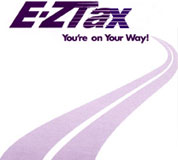7/1/2008
Study: Toll Transponders Hide Cost of TollingMIT study shows electronic transponders make it easier for toll road operators to raise rates.

Electronic transponders offer toll road operators an effective means of disguising toll hikes, according to Massachusetts Institute of Technology economist Amy Finkelstein. Her study, published last December, showed how the E-ZPass system creates what she described as an "EZ-Tax."
"I find robust evidence that toll rates increase following the adoption of electronic toll collection," Professor Finkelstein wrote.
Economic theorists from John Stuart Mill to James Buchanan have argued that disguising the true price of government activity fuels government growth far beyond a level that would be acceptable to an informed citizenry. Finkelstein used electronic toll collection to test this public choice theory against real economic data.
Tolling provides a perfect test scenario, as motorists forced to toss coins into a basket are informed citizens. They know exactly how much it costs to drive on a cash-only toll road because the amount paid comes directly out of their pocket. This is not the case with transponders. Electronic transfers from credit card accounts can keep prices hidden until the monthly statement arrives. Although E-ZPass, I-Pass and Fast-Trak provide a great convenience to drivers, it comes at a price.
"Because the driver need no longer actively count out and hand over cash for the toll, the toll rate may well be less salient to the driver when paying electronically than when paying cash," Finkelstein explained.
To establish whether motorists using transponders knew how much they were paying to use a road, the study used in-person and telephone surveys. Finkelstein, for example, asked toll road users in Massachusetts, "What is your best guess of how much you paid in tolls today on the Mass Pike on your drive here?" Sixty-two percent of transponder users responded, "I don't know." Only two percent of cash users gave that response.
"The primary finding is that electronic toll collection drivers are much less aware of tolls than cash drivers," Finkelstein wrote. "This suggests that they are likely to be less (rather than more) responsive in their driving behavior to toll changes."
The finding is at odds with one of the main arguments in favor of congestion pricing. Namely, that drivers will adapt their driving behavior as the toll price changes to match levels of congestion.
The study looked next at toll collection records from 123 roads located throughout the US, with each road provided an average of fifty years' worth of data. Finkelstein noticed that adoption of electronic tolling methods increased, so did rates. Specifically, when transponder usage hit the 60 percent mark, toll rates skyrocketed between 20 and 40 percent over what they would have been in a fully manual toll collection system, despite the lower operational costs involved.
Finkelstein's data also show that cash toll hikes were 75 percent lower during state election years. She suggested that this is the case because drivers paying in cash know when they are being hit and operators are reluctant to impose an extra financial burden during a period when lawmakers are most responsive to the public. Operators have no such worry with transponders, as the data show no slowdown in electronic toll hikes during election season.
Finkelstein concluded by suggesting topics for further inquiry.
"Evidence on what is done with the extra revenue from the higher tolls -- in particular, whether it is used for purposes that may be valued by users of the facility such infrastructure investment or reductions in other highways fees, or whether it primarily serves to increase rents for the governing authority through increased employment or salaries of bureaucrats -- could shed some light on the normative implications of the higher tolls under electronic toll collection," Finkelstein wrote. "Unfortunately, the available data are not sufficient for analysis of this issue."
The full text of the report is available in a 380k PDF file at the source link below.


